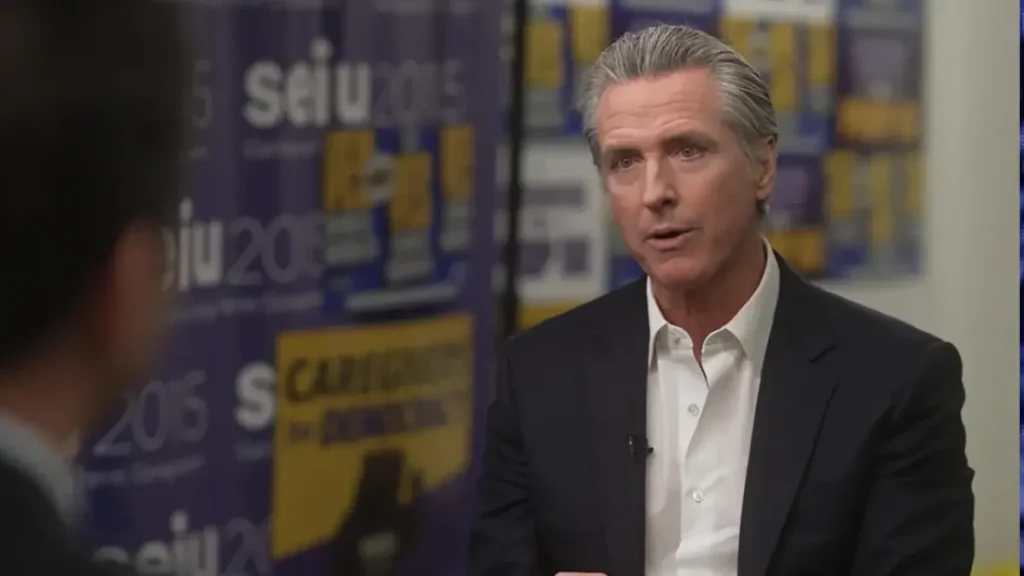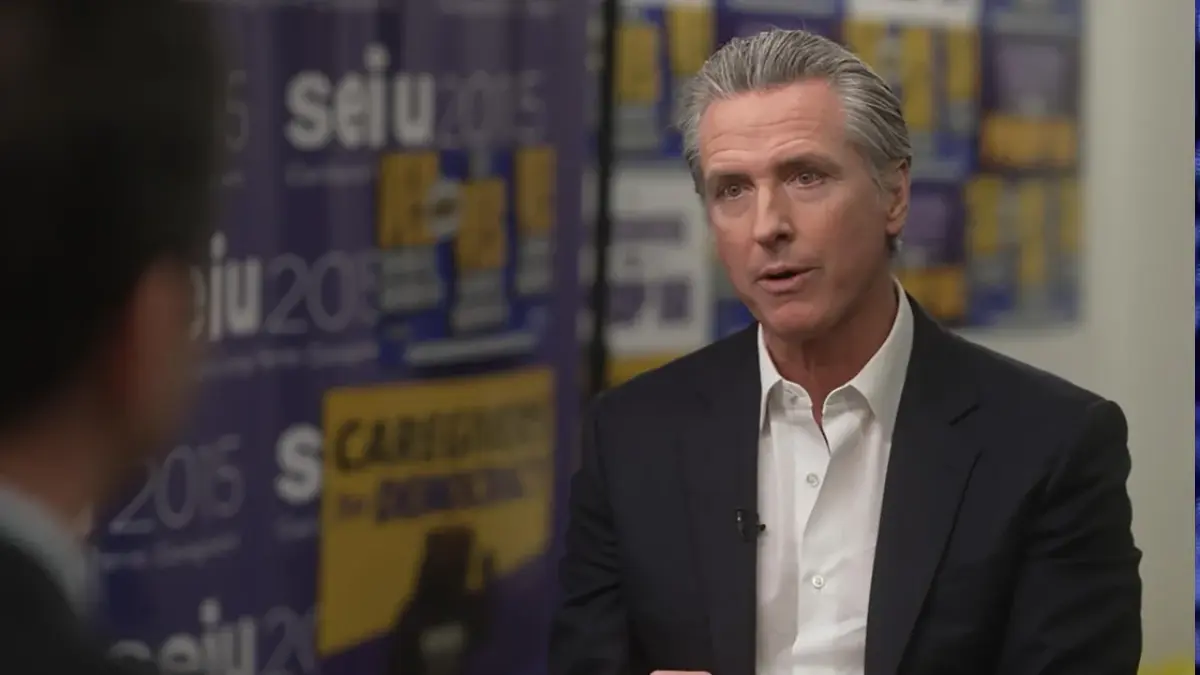California Governor Gavin Newsom says he’ll consider a White House run after the 2026 elections. Explore his 2028 presidential prospects, Proposition 50 battle, political strategy, and what this means for Democrats nationwide.
Gavin Newsom After 2026 Elections: His Path Toward a Potential White House Run

California Governor Gavin Newsom has once again fueled national speculation about his political future. In an exclusive CBS News Sunday Morning interview, he revealed that he will consider a White House run after the 2026 elections — a statement that has sent ripples through both the Democratic Party and the broader U.S. political landscape.
As Gavin Newsom’s term ends in January 2027, and with his name already circulating among top contenders for the 2028 presidential election, political analysts are examining how his current actions, especially his leadership in California and his advocacy for Proposition 50, could shape his national ambitions.
Gavin Newsom’s Political Future After 2026 Elections
When asked if he would give “serious thought” to a presidential bid once the 2026 midterm elections conclude, Gavin Newsom responded with candor:
“Yeah, I’d be lying otherwise. I can’t do that.”
The remark underscores the growing sense that Gavin Newsom after 2026 elections may become a central figure in defining the Democratic Party’s direction heading into 2028. While he emphasized that his decision is “years away,” Newsom’s political behavior already hints at preparation for a national campaign.
A Governor with National Reach
Over the past year, Gavin Newsom’s national profile has risen dramatically. From defending President Joe Biden during turbulent political moments to directly challenging former President Donald Trump’s policies, Newsom has positioned himself as one of the most visible Democratic leaders on the national stage.
His July trip to South Carolina—traditionally one of the earliest Democratic primary states—was seen by many as a strategic move. Newsom met with party leaders, energized volunteers, and even served coffee to local voters, showcasing his charisma and grassroots connection.
“I love people. I actually love people,” he said, expressing enthusiasm for engaging directly with communities beyond California.
Gavin Newsom and Proposition 50: The Democracy Battle
Central to Gavin Newsom after 2026 elections is his passionate support for Proposition 50, a California ballot measure designed to allow temporary redistricting to favor fairer representation in U.S. House districts.
Newsom argues that Proposition 50 is essential to protecting democracy and countering Republican redistricting efforts in states like Texas. His stance reinforces his image as a defender of democratic principles, aligning him with broader national concerns about voting rights and political fairness.
| Key Details about Proposition 50 | Description |
|---|---|
| Ballot Type | Special Election Measure |
| Objective | Allow Democrats to temporarily redraw U.S. House district boundaries |
| Supporters | Gavin Newsom, Barack Obama, California Democrats |
| Opposition | Republican leaders and Trump administration allies |
| Impact | Could strengthen Democratic representation ahead of 2026 midterms |
In speeches, Gavin Newsom has framed the proposition as part of a larger struggle for the soul of American democracy, calling it “about the rule of law, not the rule of Don.”
The Trump Factor and Rising Tensions
The 2026 special election in California has become a flashpoint. Federal agencies like ICE and Border Patrol are expected to increase their presence, and Newsom has warned supporters to stay vigilant.
“We’re going to be seeing more of that through Election Day,” he said. “These guys are not screwing around.”
The Justice Department has announced plans to monitor the elections, a move Newsom labeled as political intimidation under the Trump administration. However, federal officials insist the supervision aims to ensure “transparency and compliance with federal law.”
Such confrontations have helped Gavin Newsom refine his national messaging — portraying himself as a fighter against authoritarianism, a stance that resonates with many progressive voters.
Gavin Newsom’s Relationship with Joe Biden and Barack Obama
One of Gavin Newsom’s political strengths after 2026 elections lies in his alliances. During President Joe Biden’s difficult 2024 campaign moments, Newsom remained one of his staunchest defenders. Even as calls for Biden to drop out grew louder, Newsom toured states rallying for him.
“There was no daylight between us,” Newsom said at the time.
Following Biden’s withdrawal, sources confirm that Newsom and Biden have remained close. Similarly, Barack Obama has reportedly offered quiet encouragement for Newsom’s Proposition 50 campaign, even joining a volunteer video call in support.
This network of influence could prove critical if Gavin Newsom after 2026 elections chooses to enter the 2028 presidential race.
Overcoming Challenges and Building a National Identity
Despite his political achievements, Gavin Newsom’s journey is also deeply personal. He has been open about living with dyslexia, recalling academic struggles and low SAT scores. Yet, his rise from a struggling student to California’s governor—and possibly a future White House contender—embodies the American story of perseverance.
“I have no idea,” he said of his presidential future. “The idea that someone like me would even be considered is extraordinary.”
This self-reflection could serve as a powerful narrative for a Gavin Newsom 2028 campaign, appealing to voters seeking authenticity and resilience in leadership.
Gavin Newsom After 2026 Elections: What Comes Next
Though Gavin Newsom after 2026 elections insists his focus remains on California and Proposition 50, it’s clear that his eyes are also on the horizon. With term limits preventing him from seeking another gubernatorial run in 2026, the timing aligns perfectly for a national pivot.
Political observers note that Gavin Newsom’s policy record—on climate change, housing, healthcare, and education—could serve as a blueprint for progressive leadership nationwide. His willingness to challenge Donald Trump and his focus on defending democracy have made him a potential rallying figure for Democrats preparing for 2028.
Potential Democratic Contenders for 2028
If Gavin Newsom does enter the race after the 2026 elections, he may face competition from other prominent Democrats. Here’s a look at some potential contenders:
| Potential Candidate | Background | Political Strength |
|---|---|---|
| Gavin Newsom | California Governor | National visibility, policy experience, strong fundraising |
| Pete Buttigieg | U.S. Transportation Secretary | Debate skills, younger demographic appeal |
| Gretchen Whitmer | Michigan Governor | Midwest roots, leadership on infrastructure |
| Cory Booker | New Jersey Senator | Strong oratory, experience in Congress |
| Alexandria Ocasio-Cortez | U.S. Representative, NY | Progressive movement influence |
Public Perception and Media Focus
Public sentiment around Gavin Newsom after 2026 elections remains mixed but increasingly favorable among Democrats. Polling shows that his handling of California’s economy, climate policies, and public health has earned him credibility. However, critics often label him as “too California-centric,” suggesting he may need to broaden his appeal in swing states.
Still, his media-savvy persona, polished communication style, and ability to confront Republicans head-on make him a compelling candidate in a polarized era.
FAQs about Gavin Newsom After 2026 Elections
Q1: Will Gavin Newsom run for president after the 2026 elections?
A1: Gavin Newsom has stated he will “consider” a White House run after the 2026 elections, but he has not officially announced any plans yet.
Q2: What is Proposition 50 and why is it important?
A2: Proposition 50 is a California ballot measure championed by Newsom that allows temporary redistricting to protect fair representation and counter Republican gerrymandering efforts.
Q3: When does Gavin Newsom’s term as California governor end?
A3: His term ends in January 2027, and he cannot seek reelection due to term limits.
Q4: How close is Gavin Newsom to Joe Biden and Barack Obama?
A4: Newsom has strong relationships with both Biden and Obama, who have supported his policies and political efforts.
Q5: Could Gavin Newsom be a front-runner for the 2028 presidential election?
A5: Many political experts believe Gavin Newsom after 2026 elections could emerge as a leading contender for the 2028 Democratic nomination, depending on the political climate.
Conclusion: The Road Ahead for Gavin Newsom
As 2026 approaches, Gavin Newsom after 2026 elections stands at a defining crossroads. With California’s governorship nearing its end, his influence within the Democratic Party continues to expand. Whether he ultimately pursues the White House in 2028 or chooses another path, Newsom’s combination of policy experience, charisma, and national exposure positions him as one of America’s most consequential political figures in the years to come.
His journey—from a dyslexic student to California’s chief executive, and possibly a future presidential contender—is a testament to persistence, leadership, and belief in democratic values. The nation will be watching closely to see what Gavin Newsom after 2026 elections decides next.

